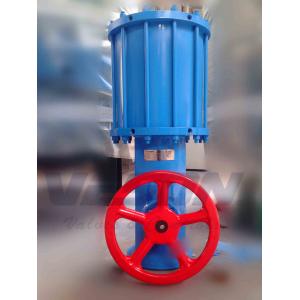
Add to Cart
high speed linear valve actuator for rising stem valves carbon steel Material
Pneumatic Actuators – Linear series
Modular Design Construction
1. SPRING CONTAINER
- Several spring containers available
2. PNEUMATIC CYLINDER
- Widest variety of cylinders available
- Widest variety of cylinders available
3. HYDRAULIC CYLINDER
- Widest variety of cylinders available
- Implemented with hydraulic pump for manual override HP
4. JACK SCREW WITH HAND-WHEEL
- HW manual override suitable for smaller actuators
5. HAND-WHEEL WITH GEARBOX
- Hand-wheel with gearbox
6. MOUNTING BRACKET
- Open type
7. CONTROL SYSTEM
- Panel or cabinet version
- Customized design
Modularity
Veson VSL actuators all share a common construction philosophy known as modularity, which is achieved by utilizing a consistent engineering design throughout our complete range.
Power cylinders, spring containers, manual overrides, control systems, and other features can be assembled in various different positions thus allowing to cover all requests in terms of fail position and additional features.
With the large stock of finished and semi-finished components always available, actuators can be assembled and supplied with very fast deliveries.
Principle of Single Acting Actuator (Spring Return)
CCW
Air to port A forces the pistons outwards, causing the springs to compress, The pinion turns counterclockwise while air is being exhausted from port B.
Loss of air pressure on port A, the stored energy in the springs forces the pistons inwards. The pinion turns clockwise while air is being exhausted from port A.
CW
Air to port B forces the pistons outwards, causing the springs to compress, The pinion turns counterclockwise while air is being exhausted from port B.
Loss of air pressure on port A, the stored energy in the springs forces the pistons inwards. The pinion turns clockwise while air is being exhausted from port A.
Principle of Double Acting Actuator
CCW
Air to Port A forces the pistons outwards, causing the pinion to turn counterclockwise while the air is being exhausted from Port B.
Air to Port B forces the pistons inwards, causing the pinion to turn clockwise while the air is being exhausted from Port A.
CW
Air to Port A forces the pistons outwards, causing the pinion to turn clockwise while the air is being exhausted from Port B.
Air to Port B forces the pistons inwards, causing the pinion to turn counterclockwise while the air is being exhausted from Port A.